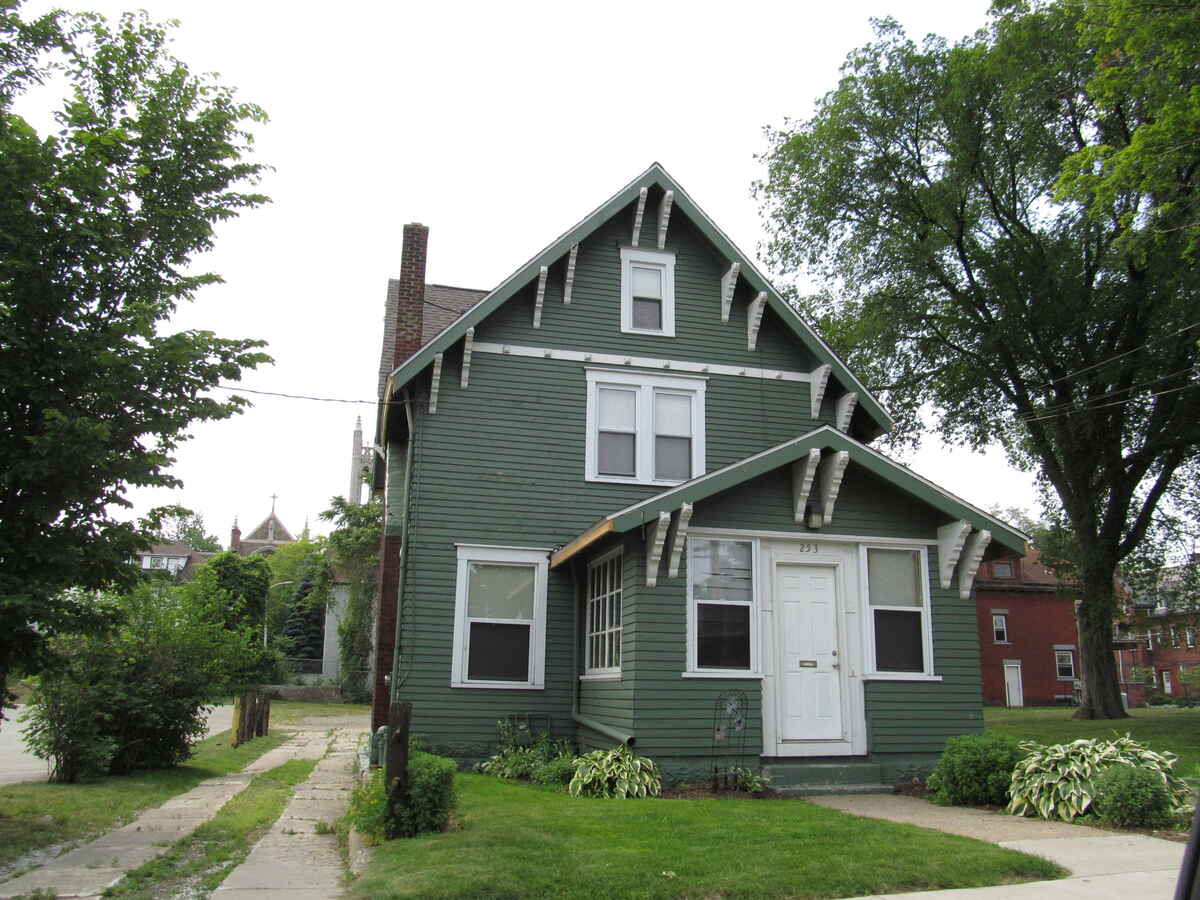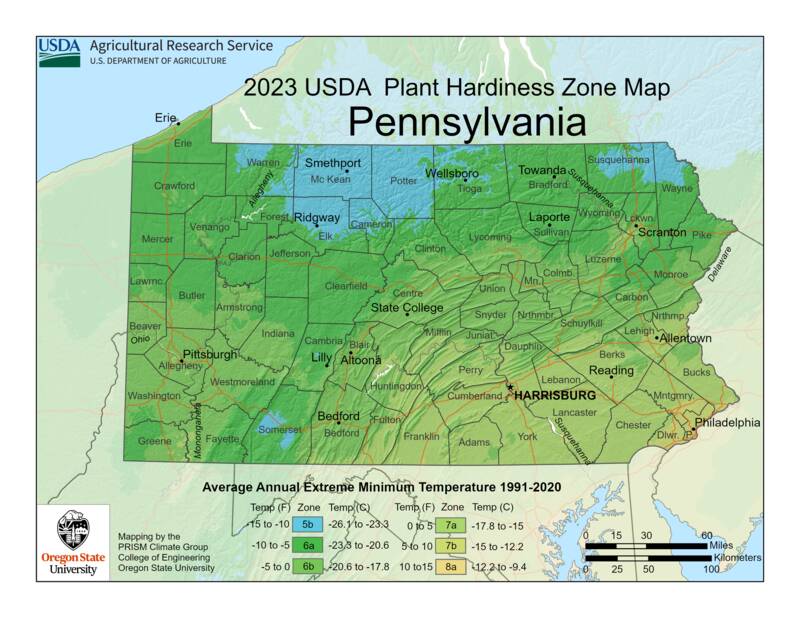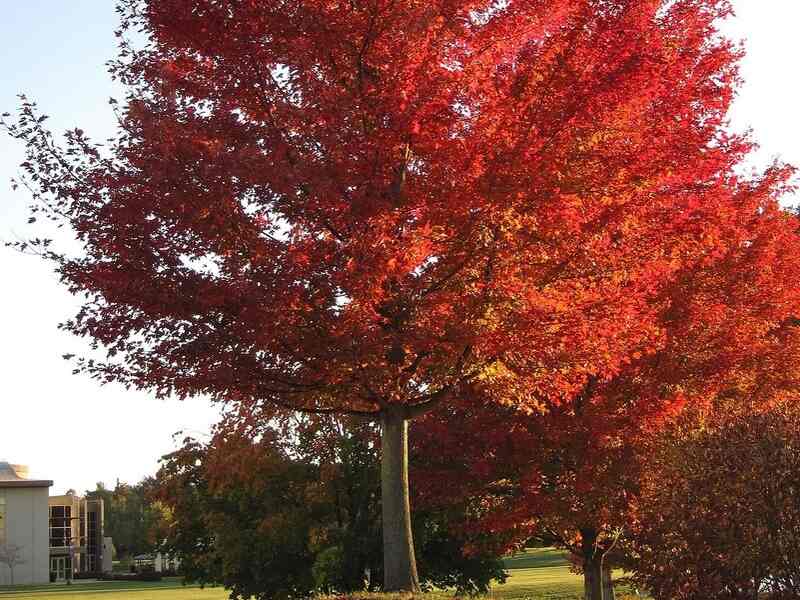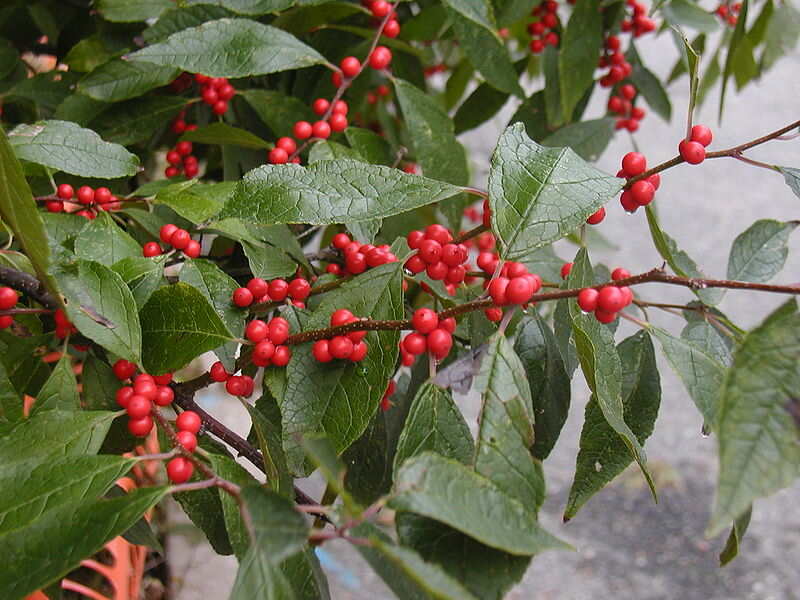
The state of Pennsylvania has six different hardiness zones, ranging from 5b to 8a. But in what planting zone is Erie County? Erie County is located in USDA hardiness zones 6a, 6b, and 7a.
With a minimum winter average that ranges from -10 F to -5 F in the coldest parts of the county, the snowy Erie County is located at the border of Lake Erie in northern Pennsylvania. In this article, we’ll talk about what this means for your plants and give you some tips on what to plant in the area so you can have a healthy lawn and garden year-round.
What to Plant in Erie, PA

Coastal deposits from when the land was once a seashore form the city’s soil, which is great for growing vegetables and fruits.
However, because of the snow during much of the year, selecting plants that bloom in the cold or do well in moist soil can be a game-changer for local homeowners or gardeners who want to add winter color to their landscape.
No matter the season, a safe bet is to opt for Pennsylvania native plants. Native plants have numerous benefits besides their ecological importance. One of them is the fact that and are perfectly adapted to the region’s hardiness zone, soils, and climate, demanding less maintenance than non-native species:

- Red maple (Acer rubrum): This beautiful tree does well in dry and moist soils and provides food and shelter for wildlife.
- Black chokeberry (Aronia melanocarpa): This shrub has moderate drought tolerance and is recommended for stormwater management in Erie County. In the fall, it is an important food source for wildlife.
- Button bush (Cephalanthus occidentalis): This wetland shrub is in the coffee family and is great for controlling erosion. Wood ducks and songbirds use this shrub to roost and build nests.

Photo Credit: User:SB_Johnny / Wikimedia Commons / CC BY-SA 3.0
- Winterberry (Ilex verticillata): This shrub is popular for its bright red berries that pop against a snowy white winter landscape.
- Butterfly weed (Asclepias tuberosa): A host plant for the monarch butterfly, this beautiful flower blooms in spring and lasts throughout the summer.
- Columbine (Aquilegia canadensis): This perennial offers year-round interest with its red and yellow flowers.
- Wild ginger (Asarum canadense): Wild ginger has a beautiful maroon color and loves moist soil under shade.
The plants mentioned above are great options for Erie County, but they are not the only ones. There are many more Pennsylvania native plants that can add beauty to your garden while being easy to maintain.
Best Grass For Erie

Photo Credit: Shutterstock
The best grasses for Pennsylvania are mostly cool-season. At the southernmost part of the state, the warm-season Zoysiagrass can thrive, but Erie’s location is favorable for cool-season grasses only. The best grasses for Erie County are:
- Kentucky bluegrass
- Perennial bluegrass
- Fine and tall fescue
- Bentgrasses
When to Plant in Erie, PA
The best time to plant grass in Pennsylvania is late summer or early fall. In late fall, the soil temperatures will already be too cold for the seeds to germinate. If you miss this window, another opportunity to seed cool-season turfgrass comes in mid-spring. Add a note to your Pennsylvania lawn care calendar so you won’t forget.
Be mindful that spring establishments are more prone to common Pennsylvania lawn weeds than late summer and fall establishments. This is because the frost events during fall can slow down weed development.
FAQ About Erie’s Hardiness Zone
When is the Growing Season in Erie, PA?
Usually, the growing season in Erie goes from May 20 to late October. This period typically totals around 162 days without frost.
When are the Frost Dates for Erie, PA?
The last spring frost date is estimated to be May 30. In the fall, the risk of frost begins around October 15, with a high risk of a frost event occurring by November 7.
What are the USDA Hardiness Zones?
The USDA hardiness zones represent the average annual minimum winter temperature for an area. It is a general guide to knowing what plants can thrive in each location and its climate. The numbers go from zone 1 (representing the coldest parts of the country) to zone 13 (representing the warmest parts of the country).
Find a Pro Near You
We know that managing a lawn is not an easy task. Mowing, watering, fertilizing, and taking care of diseases and pests are all time-consuming tasks. But now that you don’t have to do it all by yourself, why not call a landscaping care pro in Erie to help you out? Get in touch today and see the lawn of your dreams coming true.
Main Image Credit: Doug Kerr / Flickr / CC BY-SA 2.0